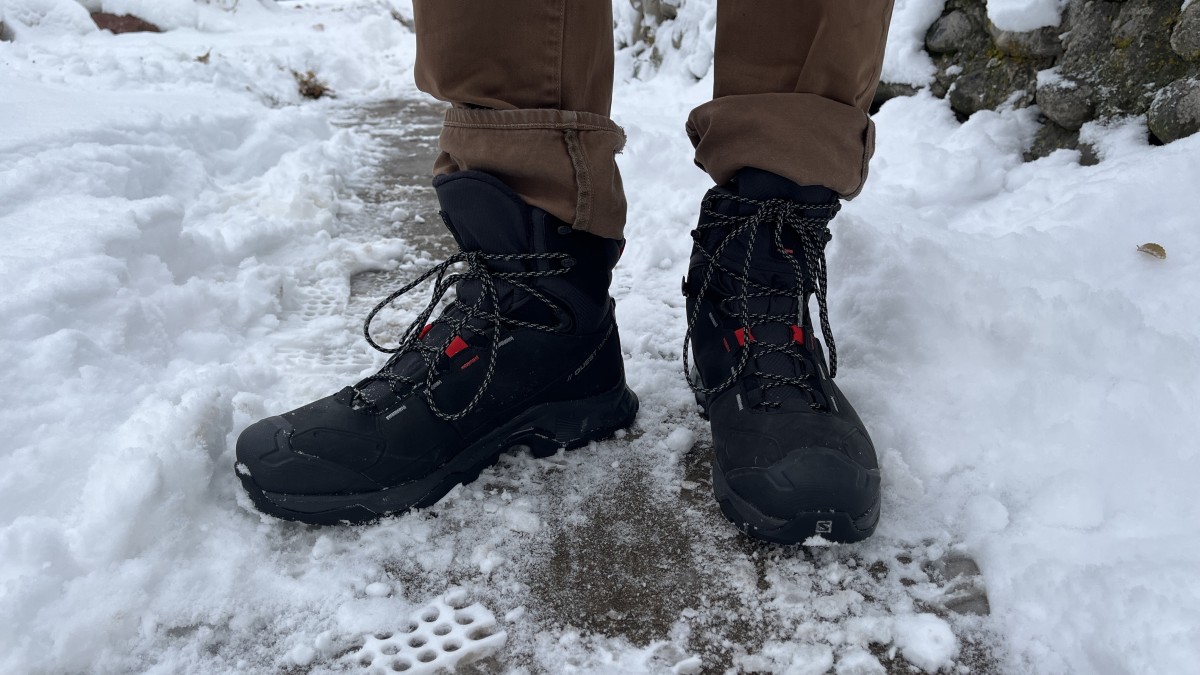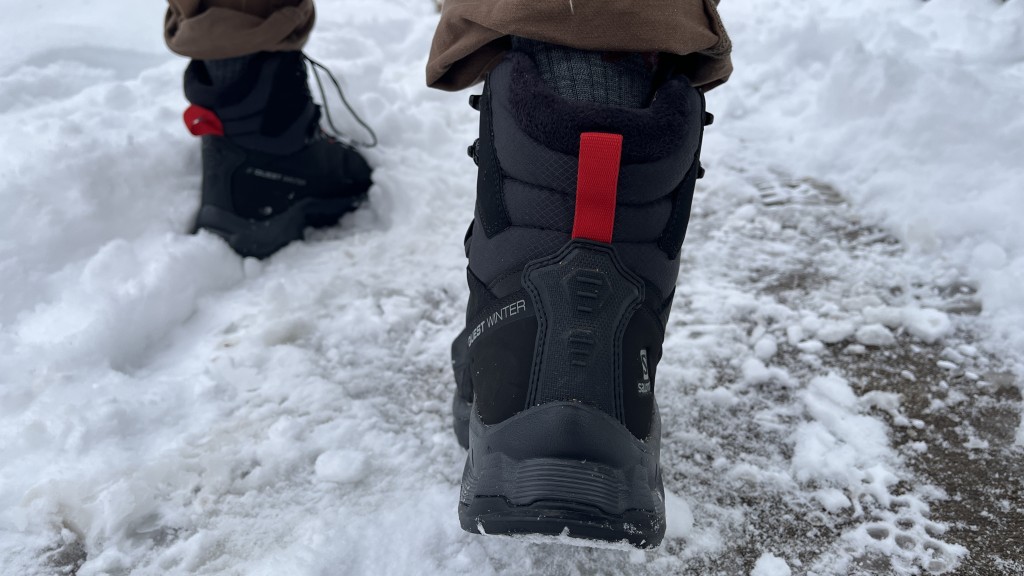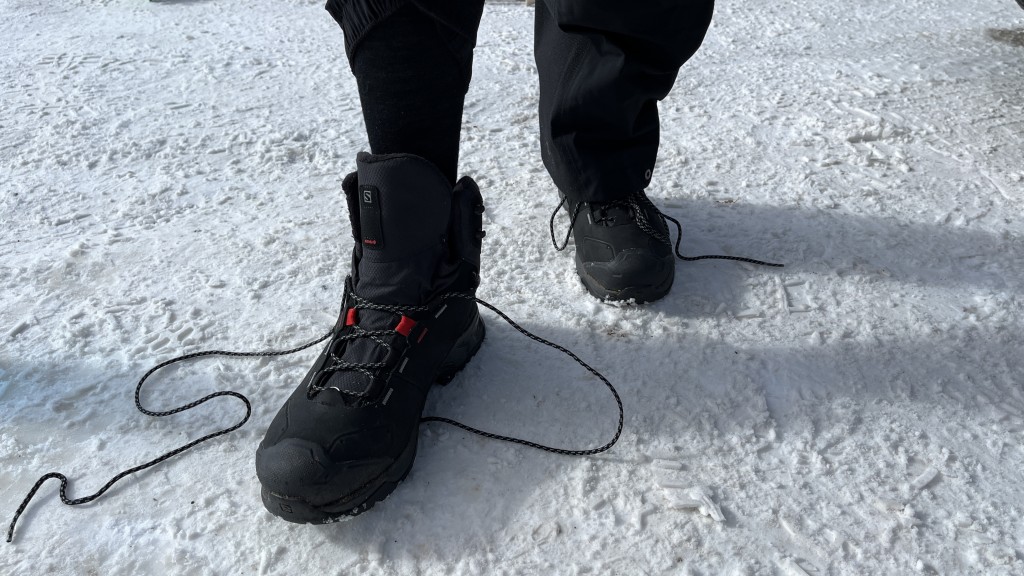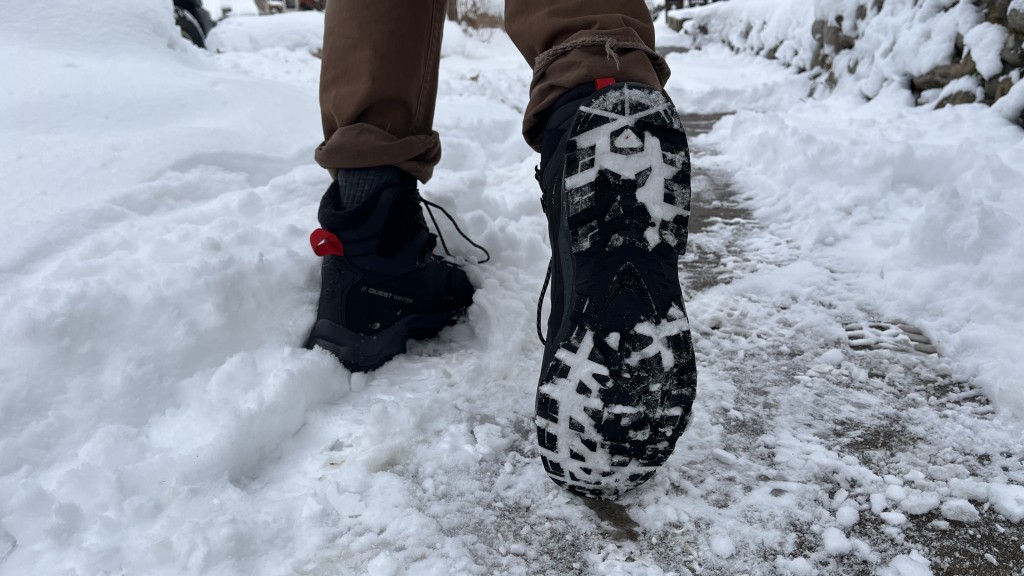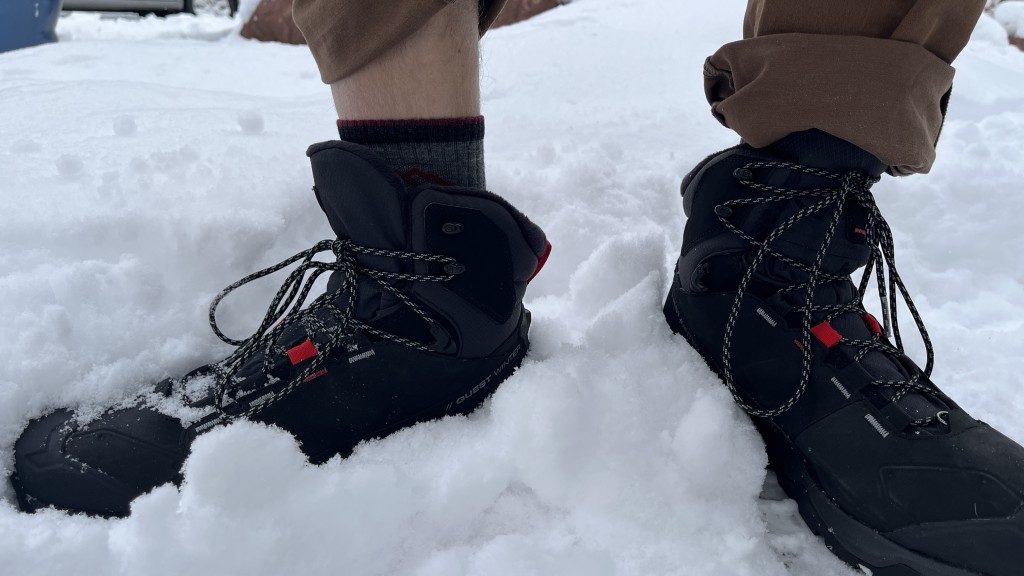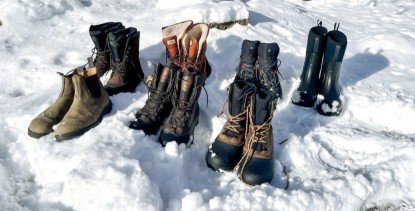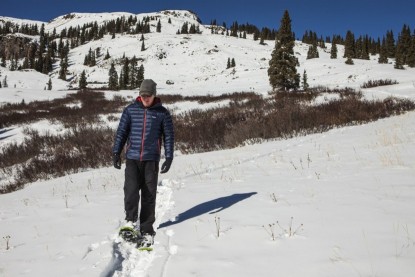Our Verdict
Our Analysis and Test Results
The Quest Winter performs well in the areas we'd expect from a winter hiking boot, including traction and comfort. However, they aren't the warmest or most weatherproof, and they have a wide fit. This leaves us a bit underwhelmed, especially considering the higher price tag.
Performance Comparison
Warmth
The Salomon Quest Winter uses high-quality synthetic insulation to provide warmth to the feet. They also have a soft fleecy lining that feels cozy. Unfortunately, there isn't much insulation, and our feet got cold in these boots whenever the temperatures dipped below freezing, and we weren't moving enough. Our feet stayed warm enough when hiking in cold weather, so keep in mind what you plan to use your boots for.
Weather Protection
With 6.5 inches (16.5 centimeters) of clearance from the ground before water penetrates, the Quest Winter offers decent weather resistance, but it won't withstand deep snow or puddles. The outer material is mostly treated leather, with a waterproof membrane underneath that keeps water from seeping through the boot seams. We did not experience any water penetrating through the boot shell. With an 8-inch (20-centimeter) shaft height, these boots can trudge through deep-ish snow while shoveling.
Comfort and Fit
The Quest is a decently comfortable boot. They have a fleece lining that feels very cozy, and the fit is athletic and built for walking long distances. We found the footbed quite wide, meaning that users with average to narrow feet will have a roomy fit. If these boots fit your wide feet, you'll love them, but our testers with average feet found other winter hiking boots to be more comfortable.
Traction
The tread on the Quest Winter is excellent. The balance between negative space and positive space is just about 50/50, which is how we like it. The lugs are evenly spaced and have sharp edges that bite into all kinds of terrain. On icy trails, these boots are trustworthy, and they are also great for use around town while running errands on snowy days. Their traction makes them highly versatile.
Durability
These boots are built to last. With rubber toe and heel caps, they won't wear out in the most common areas, and leather reinforcements are located on the top of the forefoot. All of the seams are tight and secure. One potential point of failure is the plastic lace hooks around the ankle joint. These critical hooks could possibly break over time, and since they're in an important place to create a secure fit, we wish these were more confidence-inspiring. Still, these boots are generally durable.
Should You Buy the Salomon Quest Winter TS CSWP?
The Quest Winter have a hefty price tag. They perform well enough for winter hiking boots, and they are versatile enough to be worn for a variety of winter uses, so they represent a decent value. But only those who spend a lot of time on snowy winter trails and who also have to shovel deep snow regularly should consider these boots as a do-it-all option. We think there are better options out there for each different use.
What Other Winter Boots Should You Consider?
If you are in the market for a winter hiking boot, we highly recommend the Merrell Thermo Chill Mid, which is slightly lighter, has a better fit, is just as weather resistant, and costs a lot less. If you need a boot that can handle deeper snow and water submersion, The North Face Chilkat V 400 is the best overall, and the Columbia Bugaboot III is also a high-performance all-around option at a great price.


